Jiao Sun
Evaluating Human Alignment and Model Faithfulness of LLM Rationale
Jun 28, 2024Abstract:We study how well large language models (LLMs) explain their generations with rationales -- a set of tokens extracted from the input texts that reflect the decision process of LLMs. We examine LLM rationales extracted with two methods: 1) attribution-based methods that use attention or gradients to locate important tokens, and 2) prompting-based methods that guide LLMs to extract rationales using prompts. Through extensive experiments, we show that prompting-based rationales align better with human-annotated rationales than attribution-based rationales, and demonstrate reasonable alignment with humans even when model performance is poor. We additionally find that the faithfulness limitations of prompting-based methods, which are identified in previous work, may be linked to their collapsed predictions. By fine-tuning these models on the corresponding datasets, both prompting and attribution methods demonstrate improved faithfulness. Our study sheds light on more rigorous and fair evaluations of LLM rationales, especially for prompting-based ones.
Improve Mathematical Reasoning in Language Models by Automated Process Supervision
Jun 05, 2024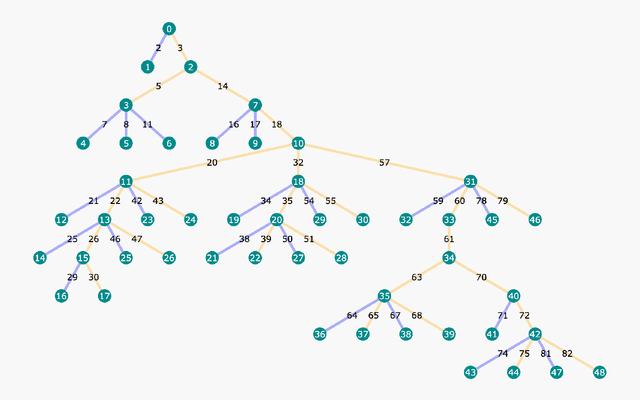

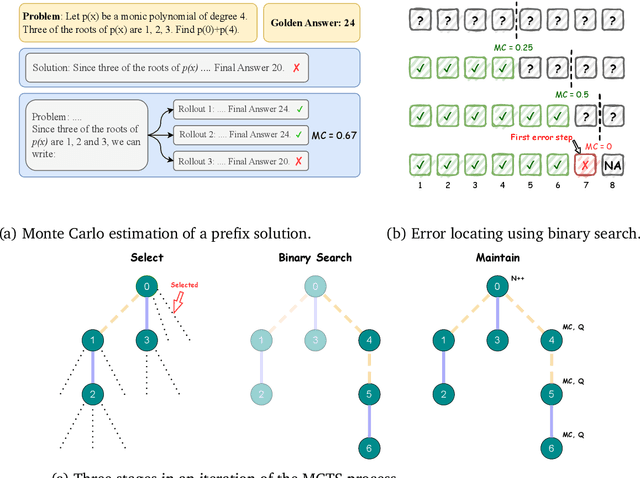
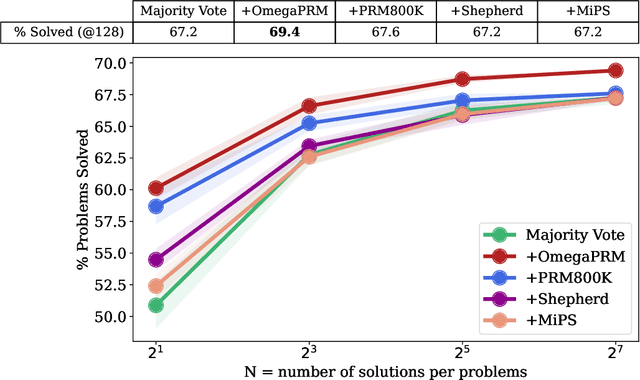
Abstract:Complex multi-step reasoning tasks, such as solving mathematical problems or generating code, remain a significant hurdle for even the most advanced large language models (LLMs). Verifying LLM outputs with an Outcome Reward Model (ORM) is a standard inference-time technique aimed at enhancing the reasoning performance of LLMs. However, this still proves insufficient for reasoning tasks with a lengthy or multi-hop reasoning chain, where the intermediate outcomes are neither properly rewarded nor penalized. Process supervision addresses this limitation by assigning intermediate rewards during the reasoning process. To date, the methods used to collect process supervision data have relied on either human annotation or per-step Monte Carlo estimation, both prohibitively expensive to scale, thus hindering the broad application of this technique. In response to this challenge, we propose a novel divide-and-conquer style Monte Carlo Tree Search (MCTS) algorithm named \textit{OmegaPRM} for the efficient collection of high-quality process supervision data. This algorithm swiftly identifies the first error in the Chain of Thought (CoT) with binary search and balances the positive and negative examples, thereby ensuring both efficiency and quality. As a result, we are able to collect over 1.5 million process supervision annotations to train a Process Reward Model (PRM). Utilizing this fully automated process supervision alongside the weighted self-consistency algorithm, we have enhanced the instruction tuned Gemini Pro model's math reasoning performance, achieving a 69.4\% success rate on the MATH benchmark, a 36\% relative improvement from the 51\% base model performance. Additionally, the entire process operates without any human intervention, making our method both financially and computationally cost-effective compared to existing methods.
Rich Human Feedback for Text-to-Image Generation
Dec 15, 2023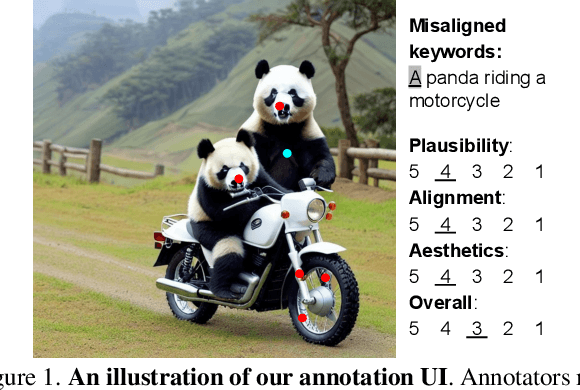
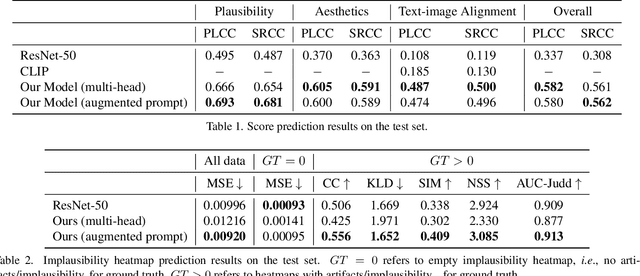
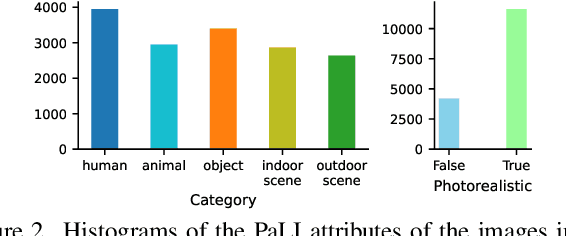

Abstract:Recent Text-to-Image (T2I) generation models such as Stable Diffusion and Imagen have made significant progress in generating high-resolution images based on text descriptions. However, many generated images still suffer from issues such as artifacts/implausibility, misalignment with text descriptions, and low aesthetic quality. Inspired by the success of Reinforcement Learning with Human Feedback (RLHF) for large language models, prior works collected human-provided scores as feedback on generated images and trained a reward model to improve the T2I generation. In this paper, we enrich the feedback signal by (i) marking image regions that are implausible or misaligned with the text, and (ii) annotating which words in the text prompt are misrepresented or missing on the image. We collect such rich human feedback on 18K generated images and train a multimodal transformer to predict the rich feedback automatically. We show that the predicted rich human feedback can be leveraged to improve image generation, for example, by selecting high-quality training data to finetune and improve the generative models, or by creating masks with predicted heatmaps to inpaint the problematic regions. Notably, the improvements generalize to models (Muse) beyond those used to generate the images on which human feedback data were collected (Stable Diffusion variants).
DreamSync: Aligning Text-to-Image Generation with Image Understanding Feedback
Nov 29, 2023



Abstract:Despite their wide-spread success, Text-to-Image models (T2I) still struggle to produce images that are both aesthetically pleasing and faithful to the user's input text. We introduce DreamSync, a model-agnostic training algorithm by design that improves T2I models to be faithful to the text input. DreamSync builds off a recent insight from TIFA's evaluation framework -- that large vision-language models (VLMs) can effectively identify the fine-grained discrepancies between generated images and the text inputs. DreamSync uses this insight to train T2I models without any labeled data; it improves T2I models using its own generations. First, it prompts the model to generate several candidate images for a given input text. Then, it uses two VLMs to select the best generation: a Visual Question Answering model that measures the alignment of generated images to the text, and another that measures the generation's aesthetic quality. After selection, we use LoRA to iteratively finetune the T2I model to guide its generation towards the selected best generations. DreamSync does not need any additional human annotation. model architecture changes, or reinforcement learning. Despite its simplicity, DreamSync improves both the semantic alignment and aesthetic appeal of two diffusion-based T2I models, evidenced by multiple benchmarks (+1.7% on TIFA, +2.9% on DSG1K, +3.4% on VILA aesthetic) and human evaluation.
"Kelly is a Warm Person, Joseph is a Role Model": Gender Biases in LLM-Generated Reference Letters
Oct 28, 2023



Abstract:Large Language Models (LLMs) have recently emerged as an effective tool to assist individuals in writing various types of content, including professional documents such as recommendation letters. Though bringing convenience, this application also introduces unprecedented fairness concerns. Model-generated reference letters might be directly used by users in professional scenarios. If underlying biases exist in these model-constructed letters, using them without scrutinization could lead to direct societal harms, such as sabotaging application success rates for female applicants. In light of this pressing issue, it is imminent and necessary to comprehensively study fairness issues and associated harms in this real-world use case. In this paper, we critically examine gender biases in LLM-generated reference letters. Drawing inspiration from social science findings, we design evaluation methods to manifest biases through 2 dimensions: (1) biases in language style and (2) biases in lexical content. We further investigate the extent of bias propagation by analyzing the hallucination bias of models, a term that we define to be bias exacerbation in model-hallucinated contents. Through benchmarking evaluation on 2 popular LLMs- ChatGPT and Alpaca, we reveal significant gender biases in LLM-generated recommendation letters. Our findings not only warn against using LLMs for this application without scrutinization, but also illuminate the importance of thoroughly studying hidden biases and harms in LLM-generated professional documents.
Evaluating Large Language Models on Controlled Generation Tasks
Oct 23, 2023Abstract:While recent studies have looked into the abilities of large language models in various benchmark tasks, including question generation, reading comprehension, multilingual and etc, there have been few studies looking into the controllability of large language models on generation tasks. We present an extensive analysis of various benchmarks including a sentence planning benchmark with different granularities. After comparing large language models against state-of-the-start finetuned smaller models, we present a spectrum showing large language models falling behind, are comparable, or exceed the ability of smaller models. We conclude that **large language models struggle at meeting fine-grained hard constraints**.
LIMA: Less Is More for Alignment
May 18, 2023



Abstract:Large language models are trained in two stages: (1) unsupervised pretraining from raw text, to learn general-purpose representations, and (2) large scale instruction tuning and reinforcement learning, to better align to end tasks and user preferences. We measure the relative importance of these two stages by training LIMA, a 65B parameter LLaMa language model fine-tuned with the standard supervised loss on only 1,000 carefully curated prompts and responses, without any reinforcement learning or human preference modeling. LIMA demonstrates remarkably strong performance, learning to follow specific response formats from only a handful of examples in the training data, including complex queries that range from planning trip itineraries to speculating about alternate history. Moreover, the model tends to generalize well to unseen tasks that did not appear in the training data. In a controlled human study, responses from LIMA are either equivalent or strictly preferred to GPT-4 in 43% of cases; this statistic is as high as 58% when compared to Bard and 65% versus DaVinci003, which was trained with human feedback. Taken together, these results strongly suggest that almost all knowledge in large language models is learned during pretraining, and only limited instruction tuning data is necessary to teach models to produce high quality output.
Towards Robust NLG Bias Evaluation with Syntactically-diverse Prompts
Dec 03, 2022Abstract:We present a robust methodology for evaluating biases in natural language generation(NLG) systems. Previous works use fixed hand-crafted prefix templates with mentions of various demographic groups to prompt models to generate continuations for bias analysis. These fixed prefix templates could themselves be specific in terms of styles or linguistic structures, which may lead to unreliable fairness conclusions that are not representative of the general trends from tone varying prompts. To study this problem, we paraphrase the prompts with different syntactic structures and use these to evaluate demographic bias in NLG systems. Our results suggest similar overall bias trends but some syntactic structures lead to contradictory conclusions compared to past works. We show that our methodology is more robust and that some syntactic structures prompt more toxic content while others could prompt less biased generation. This suggests the importance of not relying on a fixed syntactic structure and using tone-invariant prompts. Introducing syntactically-diverse prompts can achieve more robust NLG (bias) evaluation.
A Moral- and Event- Centric Inspection of Gender Bias in Fairy Tales at A Large Scale
Nov 25, 2022



Abstract:Fairy tales are a common resource for young children to learn a language or understand how a society works. However, gender bias, e.g., stereotypical gender roles, in this literature may cause harm and skew children's world view. Instead of decades of qualitative and manual analysis of gender bias in fairy tales, we computationally analyze gender bias in a fairy tale dataset containing 624 fairy tales from 7 different cultures. We specifically examine gender difference in terms of moral foundations, which are measures of human morality, and events, which reveal human activities associated with each character. We find that the number of male characters is two times that of female characters, showing a disproportionate gender representation. Our analysis further reveal stereotypical portrayals of both male and female characters in terms of moral foundations and events. Female characters turn out more associated with care-, loyalty- and sanctity- related moral words, while male characters are more associated with fairness- and authority- related moral words. Female characters' events are often about emotion (e.g., weep), appearance (e.g., comb), household (e.g., bake), etc.; while male characters' events are more about profession (e.g., hunt), violence (e.g., destroy), justice (e.g., judge), etc. Gender bias in terms of moral foundations shows an obvious difference across cultures. For example, female characters are more associated with care and sanctity in high uncertainty-avoidance cultures which are less open to changes and unpredictability. Based on the results, we propose implications for children's literature and early literacy research.
Dialect-robust Evaluation of Generated Text
Nov 02, 2022
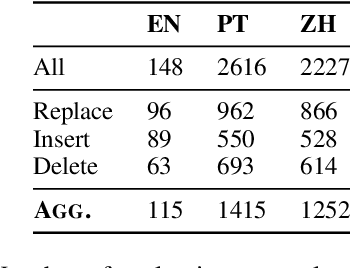


Abstract:Evaluation metrics that are not robust to dialect variation make it impossible to tell how well systems perform for many groups of users, and can even penalize systems for producing text in lower-resource dialects. However, currently, there exists no way to quantify how metrics respond to change in the dialect of a generated utterance. We thus formalize dialect robustness and dialect awareness as goals for NLG evaluation metrics. We introduce a suite of methods and corresponding statistical tests one can use to assess metrics in light of the two goals. Applying the suite to current state-of-the-art metrics, we demonstrate that they are not dialect-robust and that semantic perturbations frequently lead to smaller decreases in a metric than the introduction of dialect features. As a first step to overcome this limitation, we propose a training schema, NANO, which introduces regional and language information to the pretraining process of a metric. We demonstrate that NANO provides a size-efficient way for models to improve the dialect robustness while simultaneously improving their performance on the standard metric benchmark.
 Add to Chrome
Add to Chrome Add to Firefox
Add to Firefox Add to Edge
Add to Edge